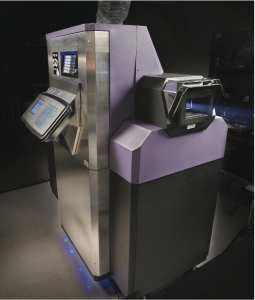This past Tuesday I got to see a demo of Kodak’s new laser-based digital cinematic projector prototype. The venue itself was pretty impressive: Kodak’s “Theater on the Ridge.” When we entered the lobby my friend (and fellow cinema-geek) Paul said, “Did we just walk through a time machine to the 1950s?”, and he meant that in the best possible way. They just don’t make ’em like this anymore. The theater is a classic, enormous, and built-to-last… think late 50’s Cadillac (without the fins).
Although Kodak is principally promoting their laser projector’s reduced total-cost ownership, the projector has three striking technical advantages over a conventional cinematic projector. Continue reading



